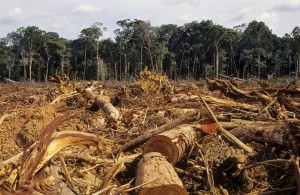
Drastic changes in climate can cause forest cover to decline or disappear completely and this a growing concern, given the alarming pattern of climate change that has been occurring globally. The demands placed on Caribbean landscapes in particular, both through increasing populations and energy demands, have increased rates of forest clearing and land use as a whole causing a phenomenon widely known as ‘deforestation.’ Deforestation is usually defined as the change of forest land to another land use. It also has global implications – affecting wood supply, carbon cycles and hydrologic balances.
In Latin America and the Caribbean, land-use change has historically been related to the demands of global markets. For example, coffee and other staples became major cash crops for export to foreign markets. In doing so, the land was overused and stripped of its nutrients in the process of meeting these demand and attempting to sustain the cash crop economy.
The impact of land use change can be particularly severe, including habitat loss, soil degradation, and loss of native vegetation. What is also troubling is that the pattern of deforestation in many developing countries often includes secondary effects like food and energy scarcity. These harmful effects are even more pronounced in the Equatorial regions of Latin America and the Caribbean because of annual weather occurrences such as hurricanes, floods, and landslides. At the same time, these very regions also provide some of the best conditions for plant growth. Around half the biomass on the entire earth is contained in Latin America’s tropical rain forests. Taking active measures to maintain these ecosystems and to reverse the harmful effects of deforestation is therefore critical.
One of the most common responses to deforestation is to replace forest cover using the basic model of tree replanting. This can be very difficult to execute in countries that do not have natural resource organizations, such as an environmental protection agency, to overlook land uses or to set aside areas as preserves. Thus, tree plantations often fail because of poor management. Reforestation projects in Latin American and Caribbean countries that are successful often achieve this success by treating the ecosystem in a more holistic manner. Not only are plants introduced that have more efficient growing periods and that nourish the soil, such as bamboo, they also provide farms with more options.
Consider poorer landowners who would have had to resort to tree cutting as a source of income and fuel. For these farmers, introducing new crops that have a multitude of uses (like craft making or a supplementary food source) while providing them with tools to help create their own forest oversight groups, can help maintain existing forest cover and even expand forest cover.


About The Author: Daphne Lundi
More posts by Daphne Lundi